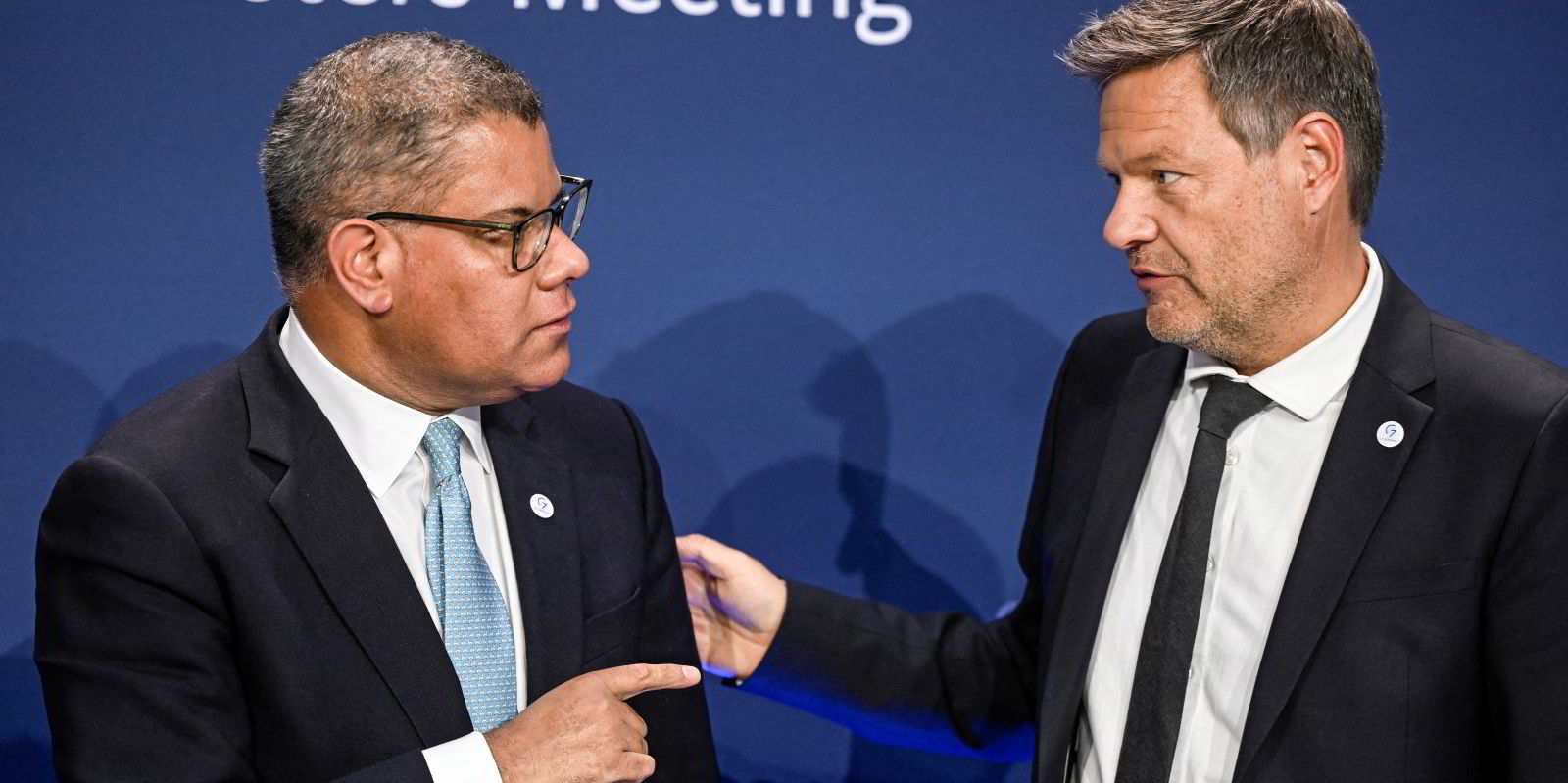
“Ramping-up global markets and supply chains for low-carbon and renewable hydrogen and its derivatives is a key enabling step towards a full decarbonisation of our economies,” the G7 climate and energy ministers said in a 39-page communiqué.
“This need has become even more prevalent given the current geopolitical turmoil and disruptions, which led to record-high energy prices and a severe risk for our energy security.”
The G7-HAP also confirms the nations’ strong financial commitment to the market ramp-up of blue and green hydrogen, as well as the exchange of best practice on sustainable H2 production and ongoing dialogue on the emerging geopolitical implications of a global hydrogen economy — but offers little in the way of the “action” promised in its name.
And controversially, the G7 also pledged to “support the role of low-carbon and renewable hydrogen and its derivatives in the decarbonisation of natural gas infrastructure and for zero-emission thermal power generation”.
The term “low-carbon hydrogen” generally refers to blue H2 derived from fossil gas with incomplete carbon capture and storage, so its inclusion in a document stating that decreasing Europe’s dependence on Russian gas “is of special urgency”, might raise a few eyebrows.
The same is true for the singling out of hydrogen use in natural gas infrastructure — pipelines that many argue have no major role to play in the decarbonisation of heating, the fuel’s primary role today, due to the expense and technical challenges that would be involved.
Supporting hydrogen for thermal power generation is also widely seen as a very wasteful use of expensive fuels. Using renewable electricity to produce green hydrogen, before compressing/liquefying, storing and transporting that H2, and then burning it to produce electricity would result in efficiency losses of about 70-80%, meaning that up to four fifths of the original clean energy is wasted.
Hydrogen could be used to produce back-up power when the wind isn’t blowing and the sun isn’t shining, but other forms of long-duration energy storage are widely believed to offer better value for money — unless the H2 was used for “seasonal storage”, ie, storing excess solar power in the summer for use in the winter. But that would make for extremely expensive electricity and would be unlikely to make economic sense until variable renewable energy has a much greater share of the power mix.
And while natural-gas infrastructure and thermal power generation were singled out by the G7, there was no mention of so-called “no-regrets” uses of clean hydrogen and its derivatives in non-electrifiable sectors, such as ammonia fertiliser production, oil refining, heavy industries such as steel and cement, and long-distance shipping — which all require huge amounts of unabated grey hydrogen or dirty fossil fuels today.
This is despite a recent call from the IEA for the G7 industrialised economies to slash some six billion tonnes of CO2 emissions from their heavy industries, which are responsible for 25% of the seven nations’ energy-system emissions.
Duplication
The G7-HAP also promised to “streamline the implementation of existing multilateral activities” while “avoiding duplication with other initiatives” from bodies such as the International Energy Agency (IEA) and the International Renewable Energy Agency (Irena).
Yet most of the commitments inevitably tie in with existing initiatives, such as Europe’s REPowerEU programme and the related draft Delegated Acts, the roll-out of support schemes in the US, UK, Japan and the EU, and existing bilateral agreements, such as between Germany and the US.
In addition to the G7-HAP and other commitments in the communiqué relating to energy security and the ongoing food crisis caused by the war in Ukraine, the ministers also pledged research and development work on low-carbon aviation — including hydrogen and electric solutions.
“The current crisis highlights the real, urgent need and the opportunity for Europe to reduce its dependency on Russia by diversifying supply, accelerating the roll out of clean, safe and sustainable energy technologies, and critically enhancing energy efficiency, with significant progress possible by the end of the year,” the ministers said.
“We emphasise the central role of low-carbon and renewable hydrogen and its derivatives such as ammonia for achieving net zero emissions and an energy-secure future.”